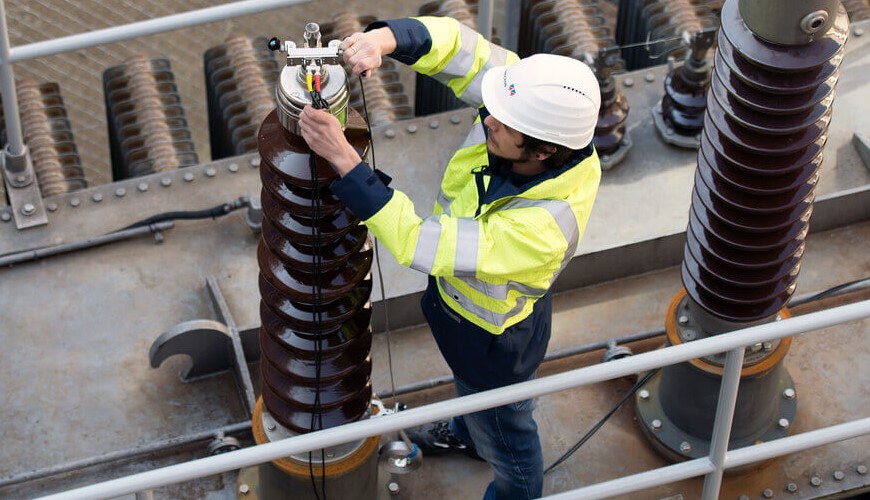

Sweep frequency response analysis (SFRA) is a powerful and sensitive analysis method used to test the mechanical integrity of transformer cores, windings and press frames in power transformers. Every electrical network has a unique frequency response, called a fingerprint. Network faults or vibrations can cause changes in this frequency response.

Comparing measurements taken at various phases or on multiple identical transformers, as well as comparing measurements with the previous fingerprint of the same transformer, provides indication of any mechanical or electrical changes.
It is recommended to test the frequency response especially in the following cases:
This analysis must be performed to check whether the windings are damaged and then other necessary procedures must be initiated.
The devices used in these analyzes generally detect winding defects and malfunctions in the magnetic core using the sweep frequency response analysis (SFRA) principle. These analyzes are carried out in full compliance with the following international standards:
The IEC 60076-18 standard covers the measurement technique and measuring equipment to be used when the test object is new or when frequency response measurement is required in the field or factory at a later stage. This standard applies to power transformers, reactors, phase shift transformers and similar equipment.
The IEEE C57.149-2012 standard aims to provide the user with instrumentation requirements and specifications, procedures for performing tests, techniques for analyzing data, and recommendations for long-term storage of data and results.
Transformers consist of many complex networks of capacitance and resistance that can form a unique shape when tested at different frequencies and plotted as a curve. The distance between the conductors of the transformer creates a capacitance. Any movement of conductors or windings changes this capacitance. Since this capacitance is part of the complex network of inductance, resistance and capacitance, any change in this capacitance is reflected in the curve.
SFRA testing is performed to obtain the initial shape of the transformer sweep frequency response by injecting various latent frequencies, which are then used as references for future comparisons. Any fault that causes a change in winding movement and so on will result in a change in capacitance or inductance and therefore affect the measured curves.
Tests are carried out periodically or during major external events such as short circuits and the results are compared with the initial figure to test if there are any problems.
Voltage transfer function SFRA testing reveals whether the mechanical or electrical integrity of the transformer has been compromised.
SFRA analysis can detect the following problems in transformers:
Briefly, sweep frequency response analysis (SFRA) is an analysis method for evaluating the mechanical integrity of the core, windings and clamping structures within power transformers by measuring electrical transfer functions over a wide frequency range.
SFRA is a comparative method, meaning that the evaluation of transformer condition is done by comparing reference results with an actual set of SFRA results. There are three commonly used methods to evaluate measured traces:
Among the numerous testing, measurement, analysis and evaluation studies provided to businesses by our organization, there are also SFRA sweep frequency response analysis services.
To get an appointment, to get more detailed information or to request an evaluation, you can ask us to fill in our form and reach you.